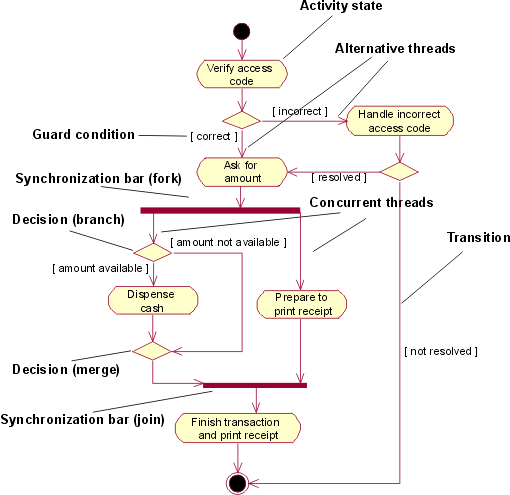|
The flow of events of a use case describes what needs to be done by the system to provide value to an actor. It
consists of a sequence of tasks that together produce something for the actor. The flow of events consists of a basic
flow, and one or several alternative flows.
The flow of events of a use case can be described graphically with the help of an activity diagram. Such a diagram
shows:
-
Activity states, which represent the performance of a task or step within the flow of events.
-
Transitions that show what
activity state follows after another. This type of transition is sometimes referred to as a completion transition,
since it differs from a transition in that it does not require an explicit trigger event, it is triggered by the
completion of the task the activity state represents.
-
Decisions for which a set of guard
conditions are defined. These guard conditions control which transition (of a set of alternative transitions)
follows once the task has been completed. Decisions and guard conditions allow you to show alternative
threads in the flow of events of a use case.
-
Synchronization bars which you can use to show parallel subflows. Synchronization bars allow you to show
concurrent threads in the flow of events of a use case.

A simplified activity diagram for the use case Withdraw Money in the use-case model of an automated teller machine
(ATM).
Activity diagram is a special case of a statechart diagram in which all or most of the states are activity states and
in which all or most of the of the transitions are triggered by completion of actions in the source states.
|
